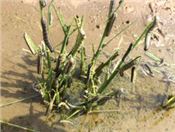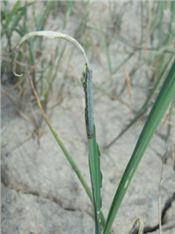|
Fall Armyworm In Rice
DR. JARROD HARDKE & DR. GUS LORENZ
LITTLE ROCK, ARK.
There are numerous reports of fall armyworm in heading rice this week, following on the heels of similar reports in Mississippi. As a general rule we don’t treat for fall armyworm in rice. Most often they’re moving in from grasses on field edges. Occasionally eggs are laid directly in rice fields.
The main concern with fall armyworm in rice is the protection of the upper canopy leaves (flag leaf and next leaf down) and the panicles themselves. Most reports have been of damage to lower canopy leaves which we aren’t concerned with at this point. However, once they begin to feed on or specifically ‘clip’ the flag leaves off – we have a problem. Of even greater concern is when they move into rice during grain fill and move to the panicle to feed directly on the high moisture, filling grains.
If they aren’t affecting the heads or flag leaves it’s best just to let them go. In some cases their presence may coincide with the need for an insecticide application for rice stink bug control – in which case the pyrethroid will control them both.
Scout around the field and determine whether the problem is field-wide or confined to certain areas or edges. Treat only where needed and save the rest. Younger rice still weeks from heading can have the foliage eaten back to the waterline but so far that hasn’t been reported yet this year. Keep an eye out in the field and in your sweep net as we try to finish this crop on the money side. ∆
DR. JARROD HARDKE: Rice Extension Agronomist, University of Arkansas
DR. GUS LORENZ: Extension Entomologist, University of Arkansas
 Fig. 1. Fall armyworm eating rice foliage back to waterline.
Fig. 1. Fall armyworm eating rice foliage back to waterline.

Fig. 2. Fall armyworms are showing up in scattered rice fields.
|
|